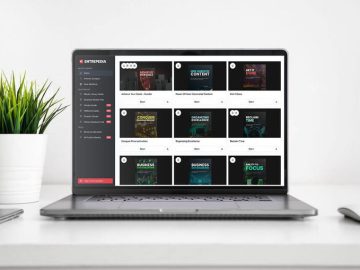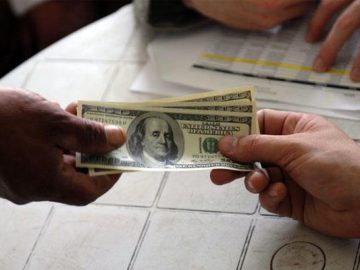What you need to know about the best savings accounts
What do the best savings accounts have in common?
The best savings account interest rates are around 5%. At a brick-and-mortar bank, you’ll often find savings rates closer to the national average, which is currently 0.45%.
If you have a $10,000 savings balance, choosing an account that pays 5% will earn you about $500 in a year, while an account paying you 0.40% APY would earn about $40. The difference increases the more you deposit and the longer you keep it in the account.
Why should I care about the best savings account rates?
If you have money left in your checking account each month — or you can adjust your budget so that you do — you should have a savings account with a high rate. (Again, think around 5%.) It’s always helpful to have money set aside for emergencies, and it’ll earn you much more in an account that pays one of the best savings account rates than in a checking account.
Just make sure you can keep enough in your savings account to avoid monthly fees. Most online savings accounts don’t charge these, but many traditional accounts do.
What monthly fees do savings accounts usually have?
The best savings accounts typically don’t charge monthly fees. You make your deposit and watch your balance grow as your money earns interest.
Why does NerdWallet pick online savings accounts as the best savings accounts?
It’s easy to find a savings account at your local bank, but if you want to earn a high rate and pay the lowest fees, you should consider storing your savings in an online account. Without the added expenses of large branch networks, online banks and nonbank providers are able to offer more favorable returns than national brick-and-mortar banks.
How to open a savings account
You can typically open an account either online or in person. You’ll need to provide your Social Security number and contact information (phone number and address), along with at least one form of identification, such as a driver’s license or a passport. If you’re applying for a joint account, the other person must provide this information and ID too.
How to open a high-yield online savings account
Similar to opening a savings account at a branch, you’ll need to provide some information to open an online account. You’ll provide your contact information and Social Security number, in addition to information from your ID (such as your driver’s license number). To make your initial deposit, you may need to link an external bank account to transfer money electronically.
Is my money safe in a savings account?
Yes, provided your money is insured by the Federal Deposit Insurance Corp. or the National Credit Union Administration.
» Dig deeper: Learn more about FDIC and NCUA insurance for deposit accounts.
Do the best savings account interest rates change over time?
Yes, rates are variable and can change over time. If you are looking for a fixed rate account, and can set aside funds for a specific time period without making a withdrawal, consider opening a certificate of deposit. NerdWallet’s list of best CD rates features top options.
How often do interest rates change?
Financial institutions generally don’t change savings rates on an hourly, daily or even monthly basis. In fact, under normal circumstances, it’s common to see APYs remain the same for several months.
It’s important to note, however, that rates are variable and theoretically can change at any time. In addition, many providers will change their rates based on what their competitors are doing. You will often see groups of providers increase or decrease their APYs at around the same time, especially if the Federal Reserve recently increased or cut rates.
To get the best yield for your money, it’s a good idea to check out the best savings rates on a regular basis — at least once a month.
Savings account terms you need to know:
Savings account: A deposit account from a financial institution that typically earns interest.
Interest: Money a financial institution pays into an account over time.
Compound interest: Compound interest is the interest you earn on both your original money and on the interest you keep accumulating. In an account that pays compound interest, the return is added to the original principal at the end of every compounding period, typically daily or monthly. Each time interest is calculated and added to the account, the larger balance earns more interest.
Annual percentage yield: The annual percentage yield, or APY, is the amount of interest an account earns in a year. The calculation is based on the account’s interest rate and the number of times interest is paid during the year.
Minimum balance: A minimum balance is the lowest dollar amount you need in a bank account either to avoid fees or satisfy account requirements. The minimum can be an average balance or a fixed amount that’s required either daily or monthly.
Average monthly balance: An average monthly balance is found by adding up the account balances at the end of each day in a month, and then dividing by the number of days in the month.
Minimum opening deposit: An initial deposit, or minimum opening deposit, is the specific amount of money you need to open a bank account.
How can I earn high interest rates besides a savings account?
Money market accounts: These accounts are a type of savings account, but they might have higher minimum balances and offer perks such as check-writing, which is rare for savings accounts.
Certificates of deposit: These accounts lock your balance away for a specified period of time — often between one year and five years — in exchange for a higher interest rate. But if you withdraw any money during the term, you’ll typically have to pay a penalty. CDs are also covered by FDIC insurance.
Is savings account interest taxable?
Yes, savings account interest is generally taxable. Your provider will probably send you a form reporting it if you earned more than $10 during the tax year. Note that you are likely to earn more interest with a high-yield savings account.
What’s the difference when NerdWallet notes “Member FDIC” vs. “funds insured by FDIC” on savings accounts?
When we describe a savings account that is offered by a bank, we note “Member FDIC,” since the bank is a member of the Federal Deposit Insurance Corp. and the account is federally insured. If a financial technology company — not a bank — offers a savings account, it typically partners with a bank that is an FDIC member to hold the funds so deposits can be insured. In those cases, we note “funds insured by the FDIC.” Savings accounts at credit unions are federally insured by the National Credit Union Administration, so we note “funds insured by the NCUA.”
Full list of editorial picks: best savings accounts
Here are all of NerdWallet’s picks for the best savings accounts.
-
Barclays, 4.20% savings APY with no minimum to open account (read full review), Member FDIC.
-
Bask Bank, 4.85% savings APY with no minimum to open account (read full review), Member FDIC.
-
BMO Alto, 4.60% savings APY with no minimum to open account (read full review), funds insured by FDIC.
-
Bread Savings™, 4.75% savings APY with $100 minimum to open account, (read full review), Member FDIC.*
-
CIT Bank, 4.70% savings APY with $100 minimum to open account (read full review), Member FDIC.
-
Citizens, 4.15% savings APY with $0.01 minimum to open account (read full review), Member FDIC.
-
E*TRADE, 4.25% savings APY with no minimum to open account (read full review), Member FDIC.
-
EverBank (formerly TIAA Bank), 4.75% savings APY with no minimum to open account (read full review), Member FDIC.
-
Ivy Bank, 5.00% savings APY with $2,500 minimum to open account (read full review), Member FDIC.
-
Jenius Bank, 4.80% savings APY with no minimum to open account (read full review), funds insured by FDIC.
-
Laurel Road, 4.50% savings APY with no minimum to open account (read full review), funds insured by FDIC.
-
LendingClub, 4.00% savings APY with no minimum to open account (read full review), Member FDIC.
-
Marcus, 4.10% APY (annual percentage yield) as of 10/10/2024 with no minimum to open account (read full review), Member FDIC.
-
My Banking Direct, 4.85% savings APY with $500 minimum to open account. (read full review), Member FDIC.
-
Popular Direct, 4.65% savings APY with $100 minimum to open account (read full review), Member FDIC.
-
Quontic Bank, 4.25% savings APY with $100 minimum to open account (read full review), Member FDIC.
-
Salem Five Direct, 4.50% savings APY with no minimum to open account (read full review), Member FDIC.
-
Sallie Mae Bank, 4.20% savings APY with no minimum to open account (read full review), Member FDIC.
-
SoFi, 4.20% savings APY (variable and subject to change) with no minimum to open account (read full review), Member FDIC.
-
Synchrony Bank, 4.30% savings APY with no minimum to open account (read full review), Member FDIC.
-
TAB Bank, 4.52% savings APY with no minimum to open account (read full review), Member FDIC.
-
UFB Direct, 4.31% savings APY with no minimum to open account (read full review), Member FDIC.
-
Upgrade, 4.69% APY, no minimum to open account (read full review), funds insured by FDIC.
-
Zynlo, 5.00% APY with $10 minimum to open account (read full review), funds insured by FDIC.
-
*Bread Savings™ disclosure
All Bread Savings APYs are accurate as of 10/10/2024. APYs are subject to change at any time without notice. Offers apply to personal accounts only. Fees may reduce earnings. For high-yield savings accounts, a minimum of $100 is required and must be deposited in a single transaction. For high-yield savings accounts, the rate may change after the account is opened.




